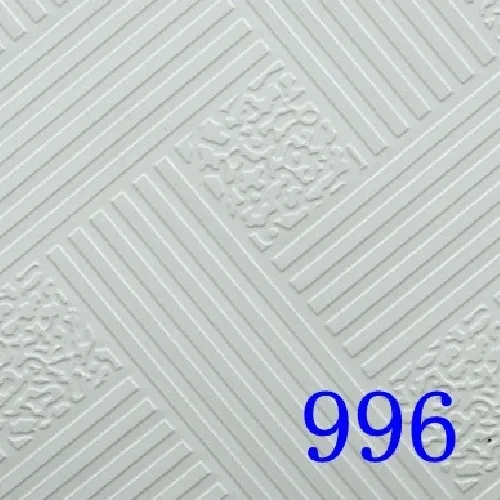- Afrikaans
- Albanian
- Amharic
- Arabic
- Armenian
- Azerbaijani
- Basque
- Belarusian
- Bengali
- Bosnian
- Bulgarian
- Catalan
- Cebuano
- Corsican
- Croatian
- Czech
- Danish
- Dutch
- English
- Esperanto
- Estonian
- French
- German
- Greek
- Hindi
- Indonesian
- irish
- Italian
- Japanese
- Korean
- Lao
- Malay
- Myanmar
- Norwegian
- Norwegian
- Polish
- Portuguese
- Romanian
- Russian
- Serbian
- Spanish
- Swedish
- Thai
- Turkish
- Ukrainian
- Uzbek
- Vietnamese
Αυγ . 08, 2024 06:25 Back to list
Understanding the Dimensions and Specifications of T-Bar Ceiling Grid Systems for Effective Installation
Understanding T-Bar Ceiling Grid Dimensions A Comprehensive Guide
When it comes to constructing or renovating commercial spaces, one of the key elements that often comes into play is the ceiling system. Among the various options available, the T-bar ceiling grid has gained immense popularity due to its versatility and aesthetic appeal. This article delves into the intricacies of T-bar ceiling grid dimensions, helping you make informed decisions for your project.
What is a T-Bar Ceiling Grid?
A T-bar ceiling grid system comprises metal grid frameworks that create a grid-like pattern on the ceiling. These grids support acoustic panels, tiles, and other ceiling materials, enhancing the overall aesthetic and functionality of the space. T-bar ceilings are favored in many environments, including offices, schools, and retail spaces, because they are easy to install, modify, and maintain.
Standard Dimensions
T-bar ceiling grids come in standard dimensions, primarily based on the size of the tiles they support. The most common grid size in commercial applications is 2 feet by 2 feet (24 inches by 24 inches) and 2 feet by 4 feet (24 inches by 48 inches). The grid itself is usually constructed from 0.019-inch thick galvanized steel and is available in various widths, typically ranging from 15/16 inch to 1 inch.
The spacing between main tees (the primary runners that run the length of the ceiling) is commonly 4 feet apart when installed in a rectangular grid configuration. The cross tees, which connect the main tees and create the grid layout, are generally found in lengths of 2 feet and 4 feet, allowing for flexibility in design and installation.
t bar ceiling grid dimensions

Importance of Proper Dimensions
Understanding and adhering to proper T-bar ceiling grid dimensions is critical for several reasons. First and foremost, it ensures a cohesive and professional appearance. Incorrectly sized grids can lead to uneven tile fitting, resulting in gaps or misalignments that detract from the overall look of the ceiling.
Furthermore, the dimensions impact the functionality of the ceiling. For instance, a poorly designed grid system may not adequately support soundproofing materials, which could compromise the acoustic performance of the space. Proper dimensions also facilitate easier installation and maintenance, reducing the time and labor costs associated with the project.
Customization Options
While standard dimensions are widely used, many manufacturers offer customization options to suit specific project requirements. This can include variations in grid heights, materials, colors, and finishes to match the design aesthetic of the space. For example, some spaces may benefit from a higher grid system to accommodate HVAC systems, lighting, or other utilities that need to be integrated seamlessly into the ceiling design.
Conclusion
In summary, understanding T-bar ceiling grid dimensions is imperative for anyone involved in construction or renovation projects. From ensuring aesthetic appeal to maintaining functionality, the right dimensions play a crucial role in the overall success of the ceiling system. By considering standard sizes, the importance of proper dimensions, and potential customization options, you will be better prepared to make informed decisions that enhance both the visual and practical aspects of your space. Whether you are a contractor, architect, or property manager, grasping the nuances of T-bar ceiling grids will ultimately lead to more successful and satisfying project outcomes.
-
Transform Interiors with PVC Gypsum Ceiling: A Stylish, Durable, and Moisture-Resistant SolutionNewsMay.19,2025
-
The Smart Interior Upgrade: Discover the Durability and Versatility of Gypsum Ceiling Access Panel SolutionsNewsMay.19,2025
-
The Smart Choice for Interior Design: Discover the Value of PVC Gypsum Ceiling SolutionsNewsMay.19,2025
-
Mineral Fiber Ceiling Tiles: The Smart Blend of Performance and AestheticsNewsMay.19,2025
-
Mineral Fiber Ceiling Tiles: The Superior Choice Over Gypsum for Sound and Fire SafetyNewsMay.19,2025
-
Mineral Fiber Ceiling Tiles: Eco-Friendly Strength and Style for Every CeilingNewsMay.19,2025







